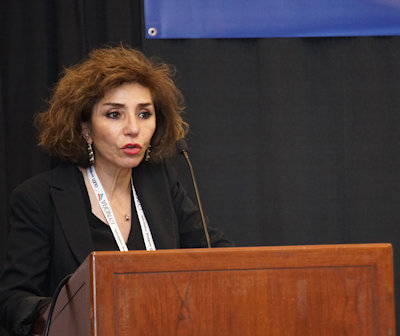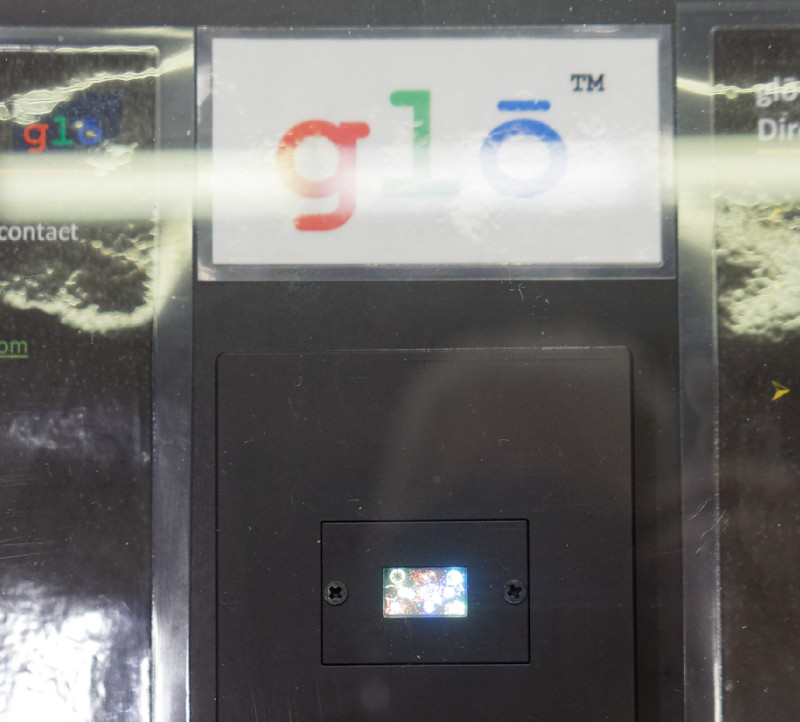 The next speaker was Fureba Danesh from Glo, where she is CEO. The company, which has only 50 staff, has been working on direct view GAN-based LED displays for six years and is a spin-off from Lund University in Sweden. It has 72 patents granted and more than 100 applied for. You need to make the LEDs, then you need to transfer the LEDs, so two sets of technology are needed. The company can make LEDs from 20 micron to 4 micron and it has a direct transfer material – directly from wafer to substrate. The firm has been working on the transfer process for two years that is said to be working well.
The next speaker was Fureba Danesh from Glo, where she is CEO. The company, which has only 50 staff, has been working on direct view GAN-based LED displays for six years and is a spin-off from Lund University in Sweden. It has 72 patents granted and more than 100 applied for. You need to make the LEDs, then you need to transfer the LEDs, so two sets of technology are needed. The company can make LEDs from 20 micron to 4 micron and it has a direct transfer material – directly from wafer to substrate. The firm has been working on the transfer process for two years that is said to be working well.
The brighness is more than 10K cd/m² at a subpixel level, but can be powered down to make a true black. The devices have high reliability and 50K hours lifetime and can be tuned to any colour from UV to Red. The nanowire LEDs are very small and have indium included to select the colour. There are many many nanowire emitters in each LED so there is an inherent redundancy and that means a high yield using standard LED equipment, Danesh claimed. The company is working on making a monolithic LED of RGB into a single chip device. The properties and performance of the RG&B are very similar.
Unusually, a microLED based on nanowires gets more efficient as the size gets smaller – because it is easier to extract the photons. Typically, the 220 lm/w for standard LED materials and devices gets less efficient as the LEDs get smaller.
Glo claims a 10X brightness and power efficiency advantage over OLED devices for AR applications.
Now Glo is planning volume production for consumer applications including AR and also for mobile devices. Glo can deliver HDR and high resolution, Danesh said.
The plan is to have the first ‘nLED’ products in 2018 and the displays are being shown by Jasper Display Corp which is the maker of the CMOS backplanes used to create the sample.
Glo is Looking for a Partner
Glo needs a partner for high volume manufacture as it only has a small number of reactors, but a key point of its technology is that standard LED equipment can be used. The transfer equipment uses standard components and the company has POs in place with an equipment maker in Germany to develop high volume placing tools.
In response to questions, Danesh said that she couldn’t reveal who they are working with or the kind of product where the LEDs might be seen first.
Analyst Comment
Unfortunately, Glo didn’t provide its slides to the organisers, and we didn’t spot that it was missing until after the talk! I took the picture below in the iZone. The company said that it expected the image to be completely burned out, but the camera used can capture 14 f-stops of dynamic range, so the image is still visible. (BR)


